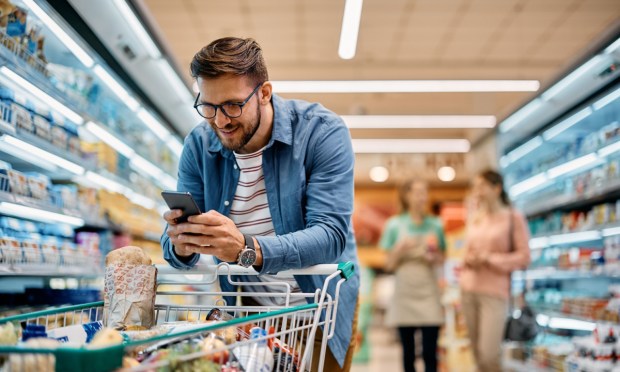Consumers Blurring Lines Between In-Store and Online Grocery Shopping

Consumers are buying their groceries both online and in-store, a phenomenon known as hybrid purchasing, and this reality is set to upend retailers’ strategies. According to the “Changes in grocery shopping habits and perceptions,” a PYMNTS Intelligence study, 39% of U.S. grocery consumers shopped groceries through a mix of physical and online stores in the last year, a percentage that has remained relatively stable; a 37% share was recorded before the pandemic. This proportion has remained consistent across age groups.
Despite the relatively stable growth over the past years, however, the preference for hybrid grocery shopping is more pronounced among younger generations, as both millennials and Gen Z consumers exhibited a 50% participation rate in the hybrid purchasing option. That suggests that hybrid grocery shopping is poised to keep growing: these generations are largely buying groceries in this way, and as they grow and gain spending power, it is likely that their shopping needs will increase accordingly.
What has changed during this time is the share of online grocery shopping, which has increased significantly. While before the pandemic, online grocery represented a modest 0.2% of consumers, currently, this share has surged to reach 7.2%, and it is expected to potentially reach 10% by the end of 2025. The proliferation of remote work, digital acceleration and a shift in consumption from off-premises to on-premises channels are the reasons behind this change.

This scenario carries significant implications for retailers. As more and more customers turn to online shopping, retailers that do not yet have operations in this channel are bound to lose sales and market share. Surveys support this trend: as reported in the PYMNTS Intelligence study, consumers exclusively shopping for groceries in pure brick-and-mortar locations have dropped from 63% to 54% in the last two years. Retailers that have not yet launched or expanded their online capabilities are at risk of losing these hybrid shoppers.
Furthermore, hybrid consumers purchase different things depending on the channel, which has direct implications for assortment planning. While for online purchases, consumers opt for packaged products, larger volume items or frequently replenished goods, for in-store shopping they lean toward fresh products, impulse buys or more distinctive items such as gourmet options or less common brands. This composition of the shopping basket is a determining factor in deciding the assortment for one channel or another, just like promotions and discounts. Customers, who in times of recession or economic stagnation are more rational, seek different deals depending on whether they are shopping in a physical store or online. For example, according to the PYMNTS Intelligence study, 54% of consumers cited price and deals as key factors in switching from shopping in a physical store to the online channel.
The consolidation of hybrid grocery shopping is an opportunity for retailers to rethink their sales options and internal operations. One thing is clear: with Gen Z and millennials betting on hybrid grocery shopping, retailers that do not adapt to these new habits are likely at risk of losing a meaningful group of consumers.

